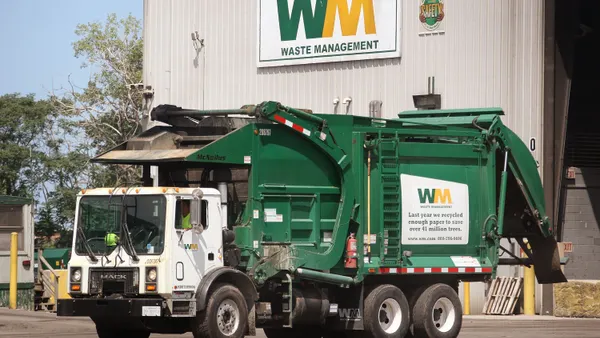Dive Brief:
- Space for waste disposal is a growing concern in Massachusetts. The state's projected disposal capacity of 5.2 millions tons in 2017 is expected to shrink to 4.7 million tons in 2018 and 4.6 million tons by 2020, as reported by the Telegram & Gazette.
- In 2014, the state handled 4.9 million of the 5.6 million tons it generated internally. About 67% of that was combusted and the remainder was sent to landfills. Massachusetts has a partial ban on new combustion facilities and hasn't received applications for a new landfill since a ban was lifted in 2000.
- The state's solid waste plan calls for more reduction and a commercial food waste ban is expected to help. Some officials are concerned that this may not be enough, especially if Casella's Southbridge landfill expansion isn't approved.
Dive Insight:
According to the Environmental Research & Education Foundation's (EREF) most recent report, Massachusetts manages 6.6 pounds of waste per capita each day. This is above the national average of 6 pounds. Over the summer, the Massachusetts Senate approved a bill that would have placed per capita limits on municipalities but it hasn't advanced any further.
While Massachusetts is currently one of the top users of waste-to-energy technology, and a plan was recently finalized to continue Covanta's operation of a facility in Pittsfield, public opposition to new combustion facilities remains strong in many areas. These sentiments have also come up around potential landfill expansions in Southbridge and Saugus.
All of this activism around waste hasn't necessarily raised awareness about reducing it aside from a recent wave of packaging bans. Barring a major shift in disposal habits, the waste will still need to go somewhere. The decision about whether financial benefits justify hosting landfills or other facilities is something that communities in other states are also trying to figure out. With the topic of interstate waste export becoming a political issue, this is a challenge that other states with limited disposal space are also beginning to face.











